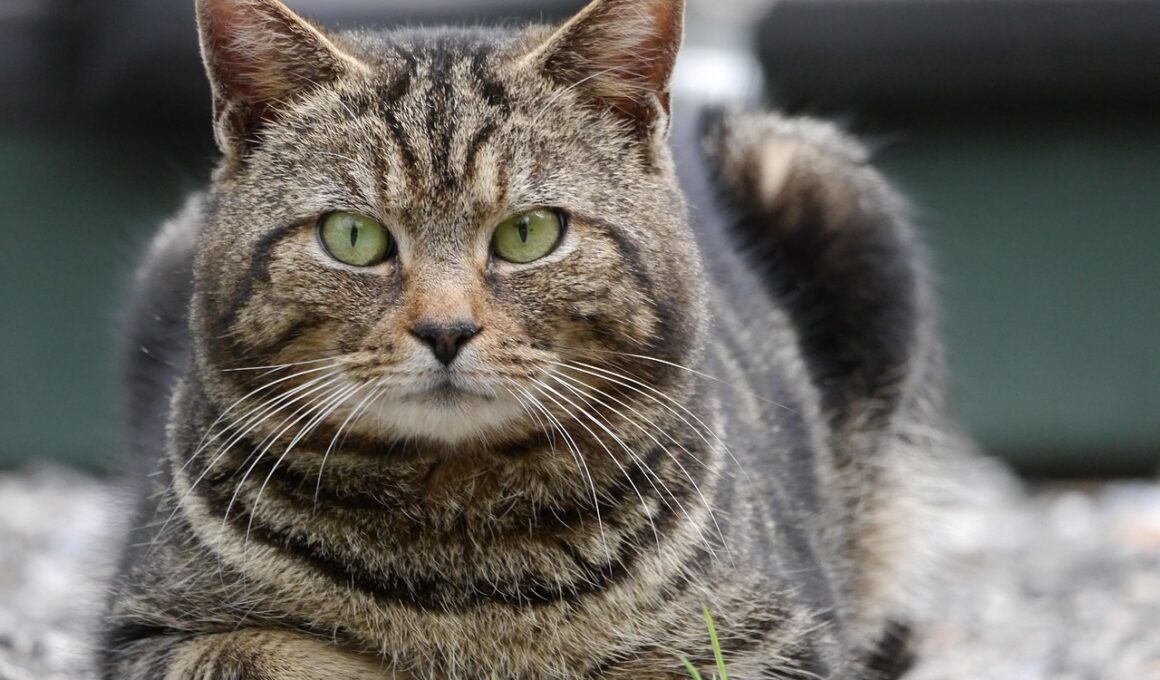Differences Between Feral and Stray Cats Explained
Understanding the differences between feral and stray cats is essential for anyone involved in cat rescue efforts. Feral cats are typically born in the wild and have minimal human interaction, making them wary and fearful of people. Stray cats, on the other hand, are domestic cats that have either been lost or abandoned by their owners. This distinction plays a significant role in how we approach their care and rehabilitation. Feral cats usually live in colonies outside, reliant on wild resources. In contrast, stray cats often seek shelter and food from humans, appearing more approachable. Their behavior varies greatly; feral cats are much less likely to be socialized, while stray cats can often be friendly towards people. Moreover, the health implications also differ between these two groups. Stray cats may be more susceptible to ailments due to their interactions with humans and environment, while feral cats face unique challenges adapted to survival in the wild. Understanding these differences is crucial for effective rehabilitation and control measures in cat rescue work. Proper identification influences the techniques used to manage these populations, ultimately benefiting their well-being.
One of the most noticeable differences between feral and stray cats lies in their behavior and social skills. Feral cats, having grown up without interaction with humans, tend to avoid people and may show aggression if approached. Their instinct is to hide or flee, which is crucial for their survival. Stray cats, alternatively, are often more sociable and can develop relationships with humans. They may approach people for food and show signs of affection, wanting companionship if they have been previously domesticated. This means that stray cats can sometimes be adopted into homes with relative ease, provided they are given time to acclimate to living indoors. In contrast, feral cats require a different approach, often needing time and care to be socialized before they can trust humans. Trap-neuter-return (TNR) programs can be effective in managing feral cat populations, allowing them to live out their lives healthily. Stray cats, when placed in the right environment, can often resume a normal life, teaching us the importance of understanding their individual needs. It is essential to address their differences to implement successful rescue and management strategies.
Health Considerations for Feral and Stray Cats
Health issues are critical when comparing feral and stray cats within cat rescue efforts. Feral cats usually have a shorter lifespan due to exposure to elements and a lack of regular veterinary care. They often suffer from various diseases, parasites, and injuries incurred through their rough lifestyles. Common issues include upper respiratory infections and flea infestations, which can be prevalent in wild settings. Conversely, stray cats, while still at risk, might have had prior access to human care, making them prone to different health problems, such as urinary tract infections or dental disease. Feral cats usually require more extensive medical intervention during capture for TNR programs. Regular health check-ups post-capture are crucial to treat diseases or infections effectively. Moreover, vaccination programs often focus on controlling viral infections like feline leukemia and panleukopenia. Understanding these health differences ensures efficient treatment options are available and helps streamline the rescue process. Any cat that is captured must be assessed correctly to determine the necessary care, establishing a sustainable plan for either population that can support their health long-term.
The physical characteristics of feral and stray cats can also provide insights into their differences. Feral cats often exhibit rugged appearances due to their survivalist lifestyles, often being leaner with weather-worn fur. Stray cats, however, may vary widely in appearance, reflecting their past relationships with humans, including better grooming and weight. Some may even display the coloration or markings specific to domestic breeds. The change in diet contributes significantly to these differences; feral cats primarily catch their own prey, while strays may scavenge human food or receive handouts, leading to various weight fluctuations. Understanding these characteristics allows rescuers to categorize the cats accurately, determining their needs efficiently. Identifying their appearance helps inform whether they are suitable for adoption or need assistance in transitioning back into a feral cat community. Moreover, it highlights the impact that environment and interaction with humans can have on populations of stray versus feral cats. Discussing the differences should not just encompass behaviors and health; physical traits are equally important in understanding how best to address their respective needs and challenges.
Community Impact of Feral versus Stray Cats
The presence of feral and stray cats can significantly impact communities, both positively and negatively. On one hand, these cats contribute to local ecosystems by controlling rodent populations, helping in maintaining a balanced environment. This unexpected benefit can endear feral cat colonies to some community members who appreciate their role in pest control. On the other hand, issues such as noise, territory disputes, or nuisance behaviors can arise, leading to conflicts with residents. Stray cats, while often viewed with sympathy and concern, can sometimes cause problems by scavenging through trash or littering. Addressing stray populations may forge community awareness regarding responsible pet ownership, informing people about the importance of spaying and neutering to prevent overpopulation. Various organizations work towards providing education about these challenges and potential solutions through outreach programs. Building alliances with local veterinary clinics and rescue organizations allows communities to set reasonable guidelines for managing both feral and stray cat populations. This collaborative effort can foster a healthier environment for cats while also actively engaging the public, promoting awareness, and encouraging compassionate solutions for both animals and humans alike.
In summary, the distinctions between feral and stray cats are critical to understanding their care and management in cat rescue initiatives. Identifying the difference informs essential decisions surrounding their health, treatment, and overall ecosystem management. Feral cats thrive in wild settings with little reliance on human contact, while stray cats often seek companionship and support from people. The various factors, such as health, physical characteristics, and community impact, amalgamate to build a greater comprehension of these two types of cats. Education is paramount in addressing the challenges brought by both groups, equipping communities to develop efficient and empathetic solutions. Implementing TNR initiatives effectively not only helps control feral cat populations but also contributes positively to community efforts aimed at ensuring their well-being. Similarly, by aiding stray cats, we promote responsible pet ownership, encouraging more individuals to engage with local shelters and support rescue endeavors actively. The key to minimizing suffering lies in understanding the unique behaviors and needs of each group, which ensures their long-term health and security within our neighborhoods.
Next Steps in Cat Rescue
For those passionate about cat rescue, the next steps involve gaining a thorough understanding of local populations, assessing their behavior, and establishing relationships with local resources. Connect with local shelters or TNR groups to gain insights into effective techniques for handling feral and stray cats. Engaging in workshops or training sessions can provide invaluable knowledge about proper capture methods and healthcare for both types of cats. Volunteering with organizations also expands your understanding and can increase your impact within the community. Promote spaying and neutering initiatives to curb overpopulation challenges and educate others about responsible practices. Form neighborhood awareness campaigns to share information about best practices to enhance community understanding. Develop outreach programs targeting irresponsible pet ownership by discussing the significance of responsible pet ownership and the role each individual can play in improving the lives of cats within the community. Whichever avenue you choose, engaging actively and compassionately is key in creating sustainable solutions that benefit both feral and stray cats alike. Adopting a multi-faceted approach ensures a more cohesive strategy in cat rescue efforts in any community.
Continuous education, community involvement, and collaborative efforts form the backbone of effective management strategies. Sharing stories about both feral and stray cats can humanize the issue, fostering empathy among the locals. Collaborating with local veterinarians ensures that all community members receive the necessary care. Consider organizing trap-neuter-return days where residents can participate, spreading awareness about the importance of spaying and neutering. Encourage local businesses and pet stores to support cat rescue initiatives, creating a unified front against overpopulation. Ultimately, successful cat rescue demands a nuanced understanding of both feral and stray populations to foster their healthy coexistence. By prioritizing their well-being, we benefit not just the cats but also instill harmony in our communities. As understanding grows, so too will our compassion and commitment to protecting these animals. Create lasting change by becoming active participants within the rescue community and promoting accomplishments. Utilize social media spaces to raise awareness and engage others, expanding the network of support for these cats. Every small action contributes towards helping feral and stray cats lead healthier, safer lives, ensuring they can thrive whether they live with humans or in the wild.


